 |
 |
 |
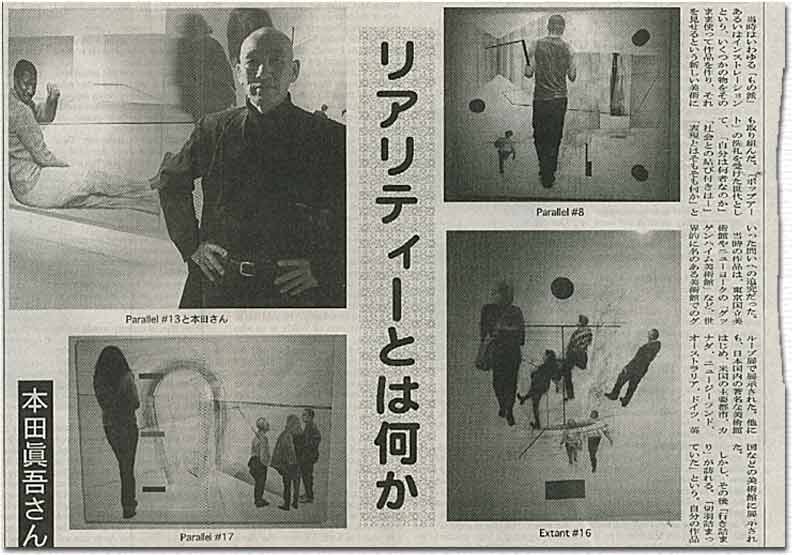 |
 |
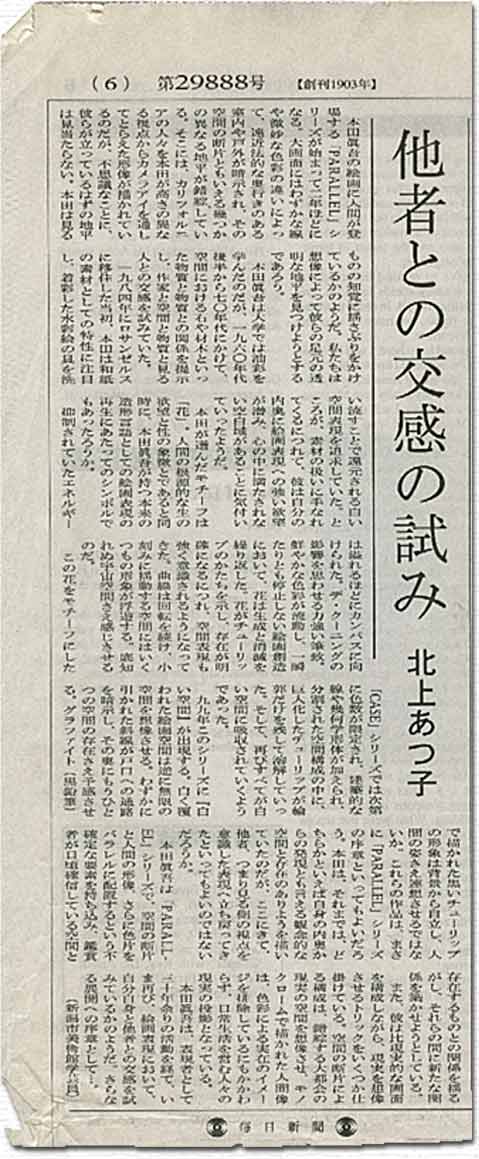
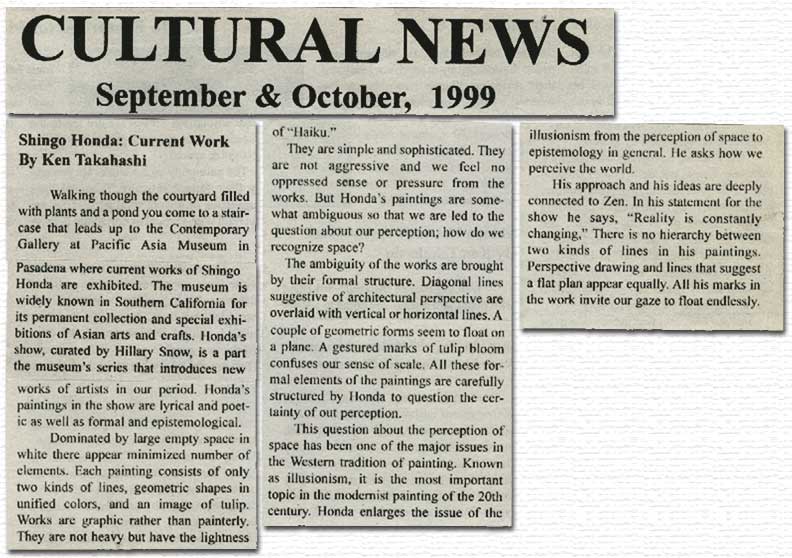 |
| Shingo Honda at LA
Artcore September 1-30, 1999 by Collette Chattopadhyay |
|
Snow Country, a novel by Nobel Prize winner, Yasunari Kawabata, is also what SHINGO HONDA calls Niigata, Japan, his place of birth in 1944. It is a place of changes. ..a place where shimmering icicles reflect the sun as it turns them into water; where spring rains regenerate summer’s abundance and the weary leaves of autumn are again replaced by the ephemeral snowflake. “Stability” and “permanence” are terms foreign to Honda’s vocabulary, unrelatable to his early experience in the world. And, ice, a continuous source of fascination, left him with an enduring vision of translucencies, transparencies and the fugi- tive nature of being — a vision which, to this day, profoundly informs his artistic praxis. Printmaker, sculptor, installation artist and painter, Honda has exhibited internationally for more than thirty years. During the late óOs and early 70s he was a leading member of Japan’s “Mono-ha” art movement, relating to the American conceptual minimalist movement of the same period although the Japanese worked from their own traditional aesthetics. Honda’s works from these years were sculptural installations consisting of a simple element taken from nature (e.g. a large rock or a log), and often connected by means of a heavy rope to the existing architecture. This work, he tells us, “was meant to let the materials speak for themselves — to dialogue with each other. As opposed to delivering a message these substances have their own message — their own essence of being.” Subsequently Honda became involved in printmaking and painting. These new series, which last well into the mid- 1980s, all titled, “To White Space”, were essentially physical presences in the form of heavily textured papers. While retaining the power of the original mono-ba works, they now combine with delicate pastel tints to create a quiet, contemplative study of ethereal, infinite space. In coming to America in the early 1 980s, Shingo Honda felt that he was leaving behind the rigidities of tradition. The new surroundings that exerted their inevitable influence on his perceptions, images and procedures those that he had avoided in Japan, such as representation and gesture, now became compelling. His work became more colorful and flowers, designed using circular movements, became his focus and source for meditation. “When I am painting I don’t think logically. I just listen to the flowers’ voices and somewhere, deep in my mind, is the sparkle of a thin sheet of ice melting in my hand.” Currently, referring less literally to flowers, Honda introduces a wider range of textures and geometries to his work The “petals” are still present, but they join with an ambiguous spatial drama of interacting tonalities from black to white with an occasional flash of color. As he works with fabric, acrylic and charcoal pencil on paper and canvas, his floral shapes, in various stages of disintegration, assume hesitant positions in dynamic architectural contexts. Ghostly stairways, distant portals or otherwise inside/outside vistas ease in and out of the void. Negative space assumes a positive role enveloping hapless drifting “shapes”. This together with contrasting opacities and transparencies and a brilliant use of line, transmits Honda’s sense of the ungraspable and transient world. |
|
| LA WEEKLY July 18-24, 1997 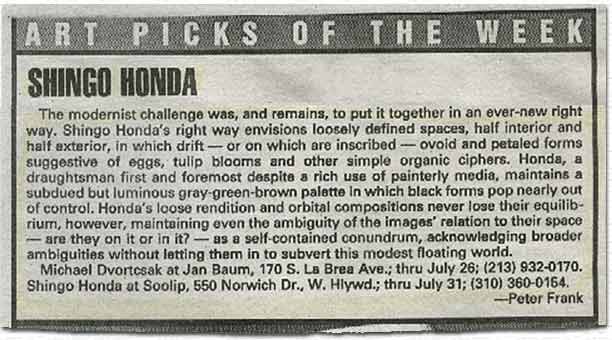 |
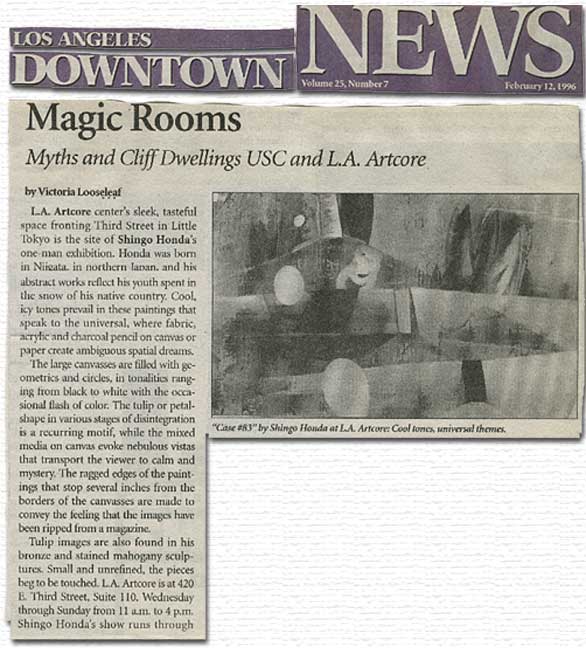 |
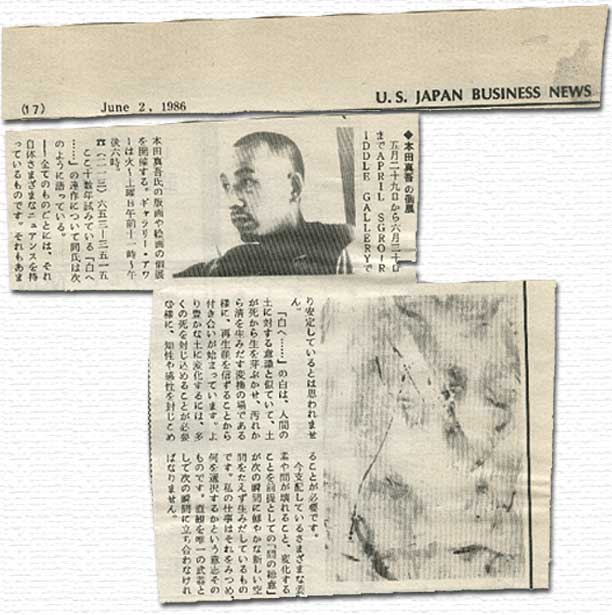 |
| Mainichi
Daily News Saturday, September 25, 1982 ART: PEOPLE AND PLACES By Amaury Saint-Gilles |
|
SHINGO HONDA: One can only turn to the artist directly to understand best and appreciate his works. Quite simply, “White space is the real thing; color is the assistant,” A year or two ago, Honda said that line in answer to an interviewer’s probings about his printed artworks, It is of course equally applicable to his paintings. Texture is somewhat a part of each work, but it is the white (open) space of each canvas that creates the image assisted most aptly by color (random or related) applications that define and bind sectors into one whole. Honda seems to be putting the viewer into a difficult position with his art— you won’t or can’t see line “a” as a tree or recognize sector “b” as the sky. The power and sometimes delicacy behind his free-flowing strokes and colorful applications are what counts. Their independent and related intensities are permanently captured in pigment atop a defined white space of either prepared canvas or paper. Within those varied rectangles, Honda strives to implant an invented pastiche of color that captures the culmination and instantaneous methods of his painting process. Buildup of pigments is fairly obvious, but knowing when to brake and when to slow and when to stop is how one judges the merit of the creator. As an artist Honda has few peers and few if any equals. His art is a unique testimony to a vision as straightforward and pure as the “white space” of his art. One needs to examine closely the white spaces while allowing color to be seen and felt only as adjutants. Then one can see how he tackles each work, brings it to fruition And incorporates each development Into an overall thematic scheme of change and progression. An exhibition of his recent paintings opens at Gallery Te tel: 03-574-6730) next Monday and will continue through Oct.9. Gallery Te is located at the Shimbashi end of the Ginra at 8-10-7 Ginza. In November, Honda takes his works home to Niigata Prefecture where he was born for a second major one-man exhibition in Nagaoka City. Even newer works of the same series will be shown in that collection. |
|
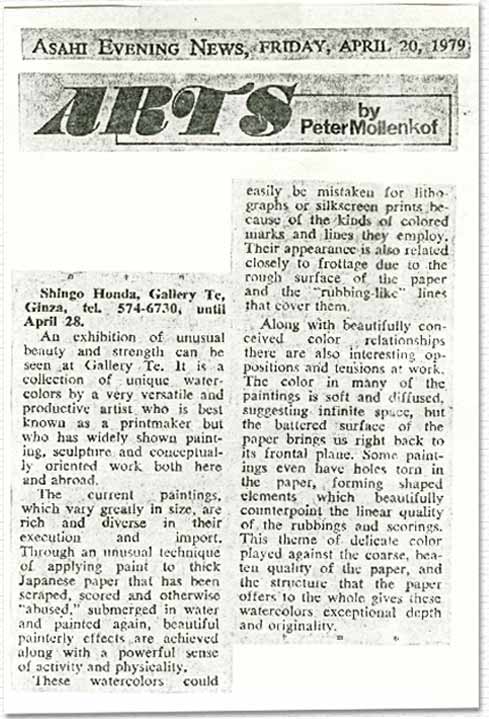 |
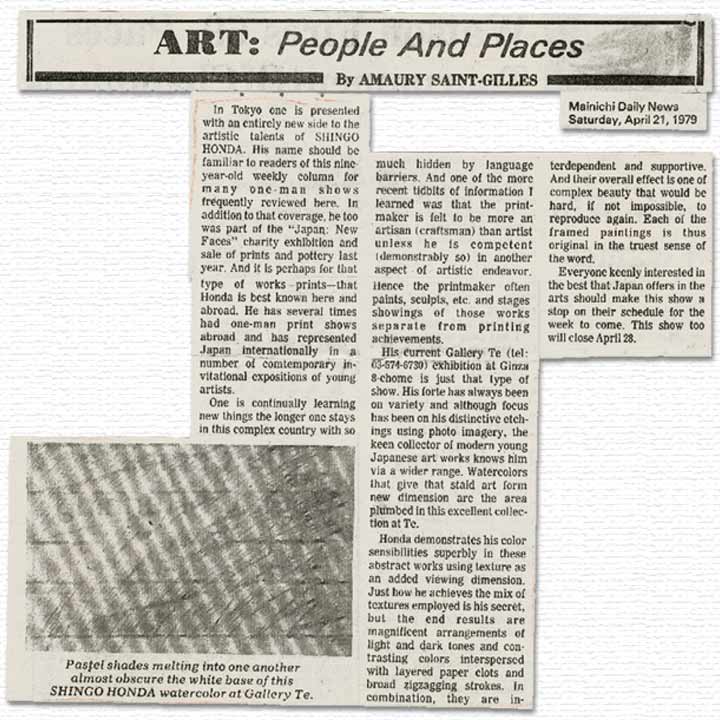 |
|
ART INTERNATIONAL |
|
|
Home
Hawaii Noon
High
Noon Prints
Parallel
2000-2004
Case
1992-1999
Pointer
(prints) 1994
Flowers & Eden
1987-1991
To White Space
& Sunya
1981-1986
Prints
1973-1986
Early Work
1973-1977
Installations
1969 -1972
Sculpture
Public Art
Selected Reviews
Resume